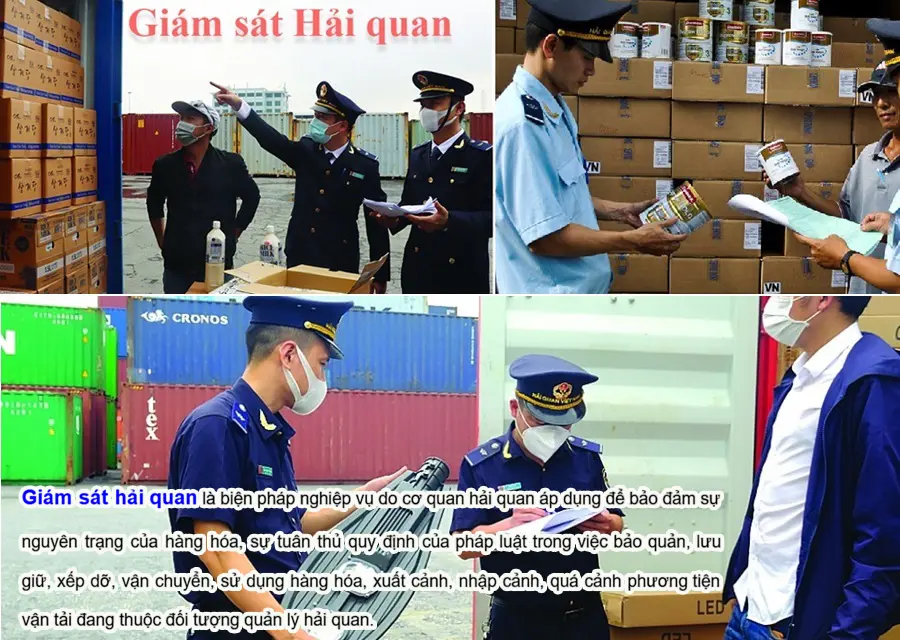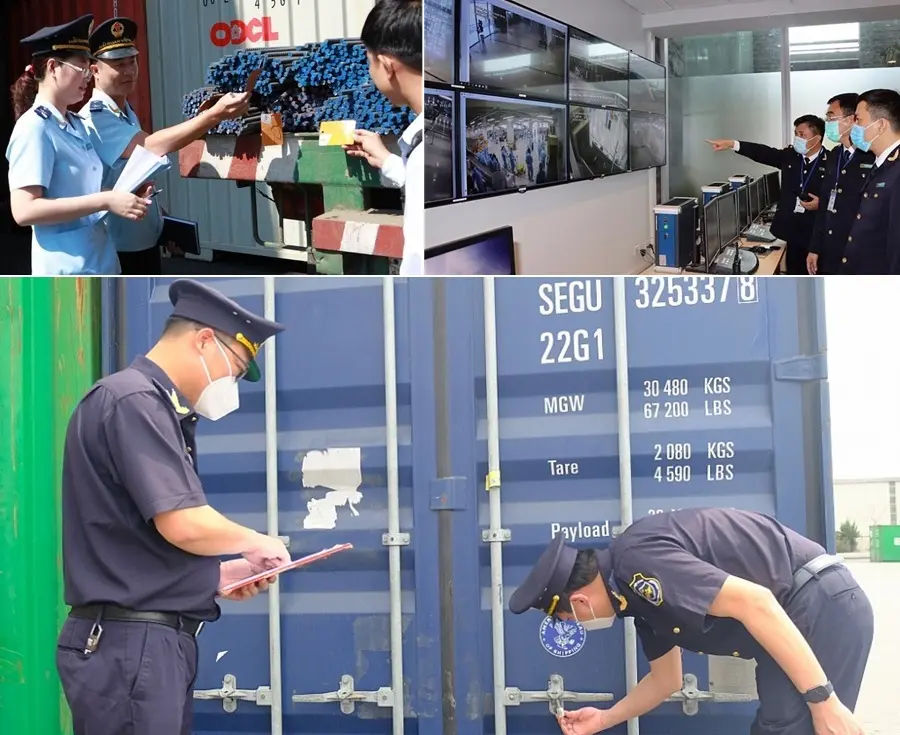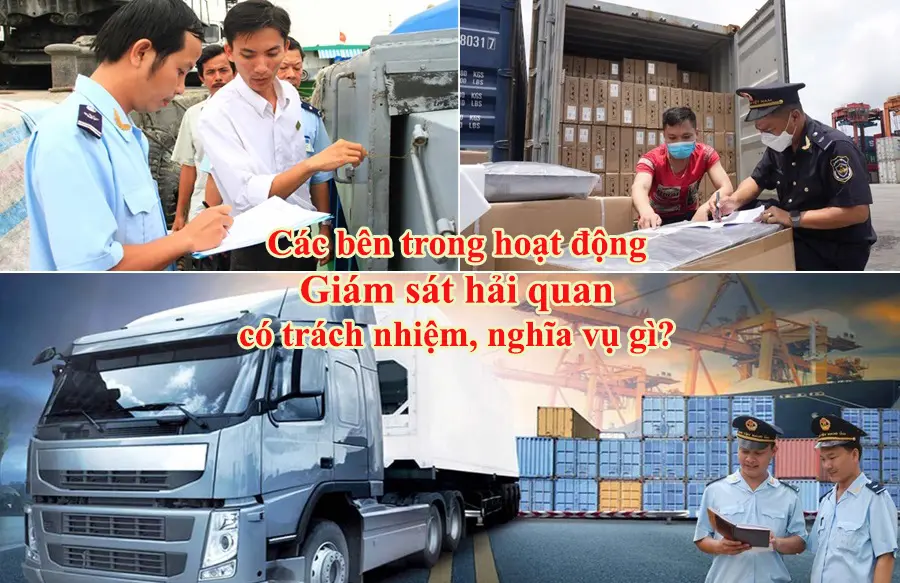x Các doanh nghiệp xuất nhập khẩu cần tìm hiểu về đối tượng, phương thức, quy định liên quan tới giám sát hải quan?
x Người khai hải quan, doanh nghiệp, nhà vận chuyển, FWD,…muốn biết các bên trong giám sát hải quan có trách nhiệm gì?
x Bạn thắc mắc thời gian giám sát hải quan mất bao lâu? Công tác giám sát hải quan dựa trên văn bản nào?
Để hiểu rõ Giám sát hải quan là gì và được quy định thế nào, dựa trên nguyên tắc nào, đối tượng giám sát là ai,…Hãy cùng Proship.vn chúng tôi cập nhật nội dung thông tin dưới đây để có lời giải đáp xác đáng nhất nhằm thúc đẩy quá trình thông quan hàng xuất, hàng nhập khẩu được diễn ra mau chóng hơn.
Giám sát hải quan và các văn bản liên quan
Nội dung sau sẽ giúp bạn hiểu rõ giám sát hải quan là gì và liên quan tới các văn bản nào:
Giám sát hải quan là gì?
Giám sát hải quan là biện pháp nghiệp vụ do Cơ quan hải quan áp dụng để bảo đảm nguyên trạng hàng hóa, sự tuân thủ quy định pháp luật trong việc bảo quản, lưu giữ, xếp dỡ, vận chuyển, sử dụng hàng hóa, xuất cảnh, nhập cảnh, quá cảnh phương tiện vận tải thuộc đối tượng quản lý hải quan.

Văn bản liên quan tới giám sát hải quan
Các văn bản liên quan đến giám sát hải quan:
- Luật hải quan số 54/2014, Nghị định 08/2015;
- Nghị định 59/2018 sửa đổi bản Nghị định 08/2015;
- Thông tư 38/2018/tt-btc và thông tư 39/2018/TT-BTC sửa đổi cho Thông tư 38/2015/TT-BTC.
Nguyên tắc cần tuân thủ khi giám sát hải quan
Các nguyên tắc cần tuân thủ khi giám sát hải quan là gì? Điều 16 Luật Hải quan 2014 quy định về nguyên tắc tiến hành giám sát hải quan như sau:
Nguyên tắc tiến hành thủ tục hải quan, kiểm tra, giám sát hải quan
1. Hàng hóa, phương tiện vận tải phải được làm thủ tục hải quan, chịu sự kiểm tra, giám sát hải quan; vận chuyển đúng tuyến đường, đúng thời gian qua cửa khẩu hoặc các địa điểm khác theo quy định pháp luật.
2. Kiểm tra, giám sát hải quan thực hiện trên cơ sở áp dụng quản lý rủi ro nhằm bảo đảm hiệu quả, hiệu lực quản lý nhà nước về hải quan và tạo thuận lợi cho hoạt động xuất nhập khẩu, xuất cảnh, nhập cảnh, quá cảnh.
3. Hàng hóa được thông quan, phương tiện vận tải được xuất cảnh, nhập cảnh sau khi đã hoàn thành thủ tục hải quan.
4. Thủ tục hải quan phải thực hiện công khai, nhanh chóng, thuận tiện, đúng quy định pháp luật.
5. Việc bố trí nhân lực, thời gian làm việc phải đáp ứng yêu cầu hoạt động xuất nhập khẩu, xuất cảnh, nhập cảnh, quá cảnh.
Đối tượng, thời gian và phương thức giám sát hải quan
Điều 38 Luật Hải quan 2014 quy định về đối tượng, phương thức, thời gian giám sát hải quan như sau:
Đối tượng giám sát hải quan
Đối tượng giám sát hải quan gồm hàng hóa, phương tiện vận tải, phương tiện vận tải nội địa vận chuyển hàng hóa đang chịu sự giám sát hải quan,…
Thời gian giám sát hải quan
Thời gian giám sát hải quan quy định:
- Hàng nhập khẩu chịu sự giám sát hải quan từ khi tới địa bàn hoạt động hải quan đến khi thông quan, giải phóng hàng và đưa ra khỏi nơi hoạt động của hải quan;
- Hàng xuất khẩu miễn kiểm tra thực tế hàng hóa chịu sự giám sát hải quan từ khi thông quan đến khi ra khỏi địa bàn hoạt động hải quan.
- Nếu phải kiểm tra thực tế, hàng xuất khẩu chịu sự giám sát hải quan từ khi kiểm tra thực tế hàng hóa đến khi ra khỏi địa bàn hoạt động hải quan;
- Hàng hóa quá cảnh chịu sự giám sát hải quan từ khi tới cửa khẩu nhập đầu tiên đến khi ra khỏi cửa khẩu xuất cuối cùng;
- Thời gian giám sát hải quan với phương tiện vận tải thực hiện theo quy định Điều 68 Luật Hải quan 2014.

Phương thức giám sát hải quan
Các phương thức giám sát hải quan gồm:
- Niêm phong hải quan;
- Giám sát trực tiếp do công chức hải quan thực hiện;
- Sử dụng phương tiện, thiết bị kỹ thuật.
Trách nhiệm của các bên trong hoạt động giám sát hải quan
Trách nhiệm các bên trong hoạt động giám sát hải quan là gì? Đó là:
Trách nhiệm của Cơ quan hải quan
Cơ quan hải quan có trách nhiệm:
- Sử dụng phương tiện, thiết bị kỹ thuật bảo đảm giám sát hải quan theo quy định của Luật này.
- Thực hiện các phương thức giám sát phù hợp tạo thuận lợi cho hoạt động XNK, xuất cảnh, nhập cảnh, quá cảnh và bảo đảm quản lý hải quan đối với hàng hóa theo quy định của Luật này.
- Hướng dẫn, kiểm tra việc tuân thủ quy định về giám sát hải quan của người khai hải quan, doanh nghiệp kinh doanh cảng, kho, bãi, cơ sở sản xuất hàng xuất khẩu và các bên liên quan.
Trách nhiệm của doanh nghiệp kinh doanh cảng, kho, bãi
Doanh nghiệp kinh doanh cảng, kho, bãi trong giám sát có trách nhiệm:
- Bố trí địa điểm để lắp đặt phương tiện, thiết bị kỹ thuật phục vụ giám sát hải quan theo yêu cầu của cơ quan hải quan;
- Thực hiện chế độ quản lý, thống kê, lưu giữ chứng từ, sổ sách, số liệu hàng hóa đưa vào lưu giữ, đưa ra khỏi khu vực cảng, kho, bãi theo quy định pháp luật và xuất trình, cung cấp cho hải quan khi có yêu cầu;
- Kết nối thông tin quản lý hàng hóa của doanh nghiệp với hệ thống thông quan điện tử của cơ quan hải quan để quản lý hàng hóa đang chịu sự giám sát hải quan đưa vào lưu giữ, đưa ra khỏi khu vực cảng, kho, bãi;
- Bảo quản, sắp xếp, lưu giữ nguyên trạng hàng hóa trong khu vực cảng, kho, bãi theo yêu cầu giám sát, quản lý của cơ quan hải quan;
- Cung cấp thông tin và phối hợp với cơ quan hải quan theo dõi, kiểm tra, giám sát hàng hóa ra, vào, lưu giữ tại khu vực cảng, kho, bãi;
- Thực hiện quyết định của cơ quan có thẩm quyền về xử lý hàng vi phạm;
- Chỉ cho phép vận chuyển hàng hóa ra, vào khu vực cảng, kho, bãi khi có chứng từ hải quan.

Trách nhiệm của người khai hải quan, người chỉ huy hoặc người điều khiển phương tiện vận tải
Người khai hải quan, người chỉ huy hoặc người điều khiển phương tiện vận tải có trách nhiệm:
- Chấp hành, tạo điều kiện để cơ quan hải quan thực hiện giám sát hải quan theo quy định của Luật này;
- Bảo đảm nguyên trạng hàng hóa và niêm phong hải quan; vận chuyển hàng đúng tuyến đường, lộ trình, thời gian được cơ quan hải quan chấp nhận;
- Sử dụng hàng hóa đúng mục đích khai báo với cơ quan hải quan;
- Sử dụng phương tiện vận chuyển hàng hóa đủ điều kiện theo quy định để cơ quan hải quan áp dụng các phương thức giám sát hải quan phù hợp;
- Xuất trình hồ sơ và hàng hóa cho cơ quan hải quan kiểm tra (khi có yêu cầu);
- Trường hợp bất khả kháng mà không bảo đảm được nguyên trạng hàng hóa, niêm phong hải quan hoặc không vận chuyển hàng hóa đúng tuyến đường, lộ trình, thời gian thì phải thông báo ngay với cơ quan hải quan để xử lý.
Giám sát hải quan là gì đã được giải đáp, cùng với đó là các nguyên tắc, quy định trách nhiệm các bên trong hoạt động giám sát hải quan. Theo đó, các doanh nghiệp xuất nhập khẩu, người khai hải quan, nhà vận chuyển,…cần cập nhật nội dung trên để hiểu rõ thuật ngữ này trong KBHQ. Nếu có nhu cầu, liên hệ 0909 344 247 để được Proship Logistics tư vấn nhanh các giải pháp khai thuê hải quan, ủy thác XNK uy tín, chuyên nghiệp.
